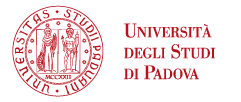CoMByN – The construction of Collective Memory in Byzantium: Towards a Network of Byzantine compilation literature across Europe and the Mediterranean
The CoMByN project will study the crucial role played by compilation literature in shaping Byzantine collective memory. It will investigate the material, historical, geographical, textual, and intellectual contexts of production and transmission of the most popular Byzantine encyclopaedia of morality, the collection of wise sayings known as Loci communes, which circulated under the name of Maximos Homologetes (7th cent.) but in reality was the result of the compilation work of multiple anonymous scholars between the 9th and the 11th century. The Loci communes can be considered a mirror of Byzantine written culture as a whole: they represent a collective effort to gather and organize the pagan wisdom of the Greeks and the Romans together with the Biblical and Christian tradition. As such, the Loci communes were a laboratory where Byzantine compilation literature was developed both as a literary genre and as a system of knowledge management. The CoMByN project will put the Loci communes at the center of the studies on Byzantine culture through a groundbreaking endeavor: the creation of an open-source digital scholarly resource bringing together the material descriptions of the manuscript witnesses, their digitization, the edition of the collection, and the history of their intellectual and social impact through their medieval and early modern translations.
The Loci communes enjoyed an immense and enduring popularity unlike any other Byzantine compilation: they are transmitted by dozens of codices dating from the 9th to the 16th century and they were translated several times over seven centuries and a wide geographic expanse spanning from Antioch, where they were translated into Arabic (11th cent.), to Kyiv and Preslav, where they were rendered into Old Russian and Bulgarian (12th cent.), to Zürich and Marseille, where they were printed in Latin (1546) and Armenian (1675). By incorporating these translations into the history of the collection, the CoMByN project will focus for the first time on the Loci communes in their role as cultural mediators in the multi-linguistic and multi-cultural communities of Eastern Europe and the Mediterranean between the Middle Ages and Early Modernity. The project will shed light on the complex networks of material, social, and intellectual circumstances at play in the history of texts.
________________
Il progetto CoMByN studierà il ruolo cruciale svolto dalla letteratura di raccolta nella creazione della memoria collettiva bizantina. Indagherà i contesti materiali, storici, geografici, testuali e intellettuali della produzione e della trasmissione di una delle più popolari enciclopedie morali, la raccolta di detti sapienziali nota come Loci communes, la quale circola sotto il nome di Massimo il Confessore (VII sec.) ma in realtà è il risultato del lavoro di compilazione di svariati dotti anonimi tra il IX e l’XI secolo. I Loci communes possono essere considerati uno specchio della cultura scritta bizantina nel suo complesso: sono l’esito di un sforzo collettivo per raccogliere e organizzare la sapienza pagana dei Greci e dei Romani insieme alla tradizione biblica e cristiana, costituendo un laboratorio per lo sviluppo della letteratura di raccolta come come genere letterario e come sistema di gestione della conoscenza. Il progetto CoMByN pone i Loci communes per la prima volta al centro degli studi sulla cultura bizantina attraverso un’impresa innovativa: la creazione di una risorsa scientifica digitale open-source che riunisca le descrizioni materiali dei testimoni manoscritti, la loro digitalizzazione, l'edizione della collezione e la storia del loro impatto intellettuale e sociale attraverso le traduzioni medievali e della prima età moderna.
I Loci communes hanno goduto di un'immensa e duratura popolarità, come nessun’altra raccolta bizantina. Sono trasmessi da decine di codici datati dal IX al XVI secolo e sono stati tradotti più volte nel corso di sette secoli: in arabo ad Antiochia (XI sec.), in diverse lingue slave a Kyev e Preslav (XII sec.), in latino nella Svizzera protestante (1546); furono stampati in armeno a Marsiglia (1675). Incorporando queste traduzioni nella storia della raccolta, CoMByN studierà il ruolo dei Loci communes come mediatori culturali nelle comunità multilingui e multiculturali dell'Europa orientale e del Mediterraneo tra il Medioevo e la prima modernità.
Finanziamento
Progetto finanziato nell’ambito del bando FIS 2 – Fondo Italiano per la Scienza.





